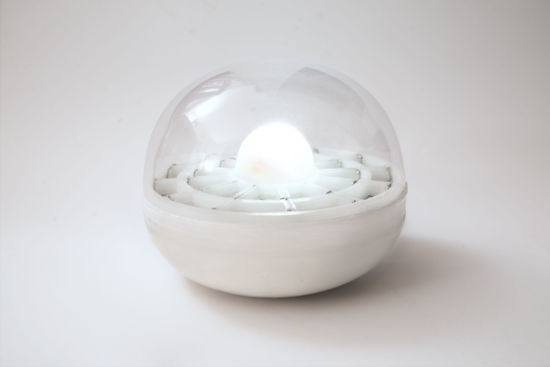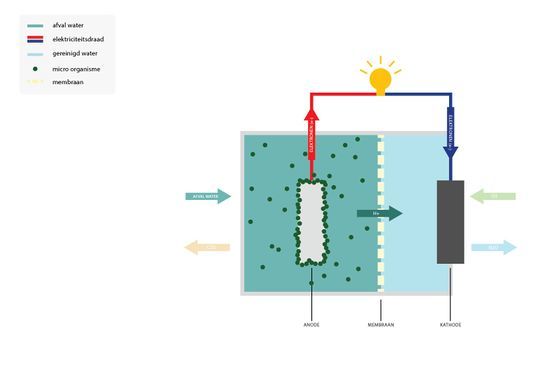Difference between revisions of "Microbial Energy"
Rdelandmeter (talk | contribs) (→Microbial Energy) |
Rdelandmeter (talk | contribs) (→Microbial Energy) |
||
| Line 16: | Line 16: | ||
[[File:microbialfuelcell.jpeg|550px]] | [[File:microbialfuelcell.jpeg|550px]] | ||
| + | |||
<small>''A microbial fuel cell has just like a regular battery an anode and a cathode side. Bacteria contained in wastewater break down organic matter at the anode side which produces electrons and protons. The electrons go through the circuit and creates voltage, whilst protons go through the membrane. At the cathode side, electrons, protons and oxygen together form clean water.''</small> | <small>''A microbial fuel cell has just like a regular battery an anode and a cathode side. Bacteria contained in wastewater break down organic matter at the anode side which produces electrons and protons. The electrons go through the circuit and creates voltage, whilst protons go through the membrane. At the cathode side, electrons, protons and oxygen together form clean water.''</small> | ||
Revision as of 18:57, 4 February 2016
Authors: René de Landmeter & Ermi van Oers
Microbial Energy
“Why would we still use polluting energy sources, if there is a renewable one, which cleans pollution?”
Our research started with a fascination: Biodesign, A Cross-Pollination of Nature, Science and Creativity. A search to the integration of natural processes in a design process.
Our goal was to amaze people by showing the possibilities of our waste. We believe by using natural processes and efficiency of ecosystems, waste doesn’t cost money but will gain money.
During our research we found out that bacteria can produce electricity. This energy is generated when bacteria break down organic matter contained in wastewater. On top of this, microorganisms even clean the water during this process.
A microbial fuel cell has just like a regular battery an anode and a cathode side. Bacteria contained in wastewater break down organic matter at the anode side which produces electrons and protons. The electrons go through the circuit and creates voltage, whilst protons go through the membrane. At the cathode side, electrons, protons and oxygen together form clean water.

